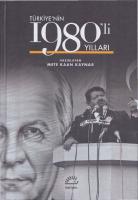The Poet Li Po 9780824886608
262 90 11MB
English Pages 80 Year 2021
Recommend Papers

- Author / Uploaded
- Yung Teng Chia-yee
File loading please wait...
Citation preview
The Poet Li Po
PALI LANGUAGE TEXTS: CHINESE Social Sciences and Linguistics Institute University of Hawaii John DeFrancis Editor
The Poet Li Po YUNG TENG
CHIA-YEE
University of Hawaii Press Honolulu
Copyright © 1975 by The University Press of Hawaii All rights reserved Library of Congress Catalog Card Number 77-189614 ISBN 0-8248-0224-1 Manufactured in the United States of America 90 91 92 93 94 95 6 5 4 3 2
Contents
Preface
vii
The Poet Li Po Notes
1
51
Stroke Index of Characters Pinyin Index
60
63
v
Preface The Tang Dynasty poet Li Po (in Pinyin transcription: Li Bo), who died in A.D. 762, has enjoyed fame not only as a poet but also as a colorful and eccentric personality. There are many anecdotes recounting his prodigious feats in imbibing wine and his disdain for conventional officials. The present work tells some of these tales in very simple form. It uses only the 400 characters introduced in my Beginning Chinese Reader (New Haven: Yale University Press, 1963), plus another 44 characters that are especially needed to tell the story. The aim in presenting this account of Li Po within the confines of such a limited vocabulary is to provide some simple supplementary reading for students who have completed a beginning reading text. As an aid to easy reading, all occurrences of new characters (other than those in the name Li Po which the student should memorize at the outset) are accompanied by their transcription. In view of the increasing emphasis on the use of simplified characters, these forms are used throughout the story for both old and new characters. All the simplified forms used in the text are presented together with their regular variants in the Stroke Index of Characters. In addition the new characters appear in both their simplified and regular forms (the latter in parentheses) in the Notes and in the Pinyin Index. The Notes present in sequential order the carefully limited number of new characters, terms, and structures, together with occasional translations of more difficult phrases. The Stroke Index of Characters lists all the new characters and simplified characters that occur in the story. Finally the Pinyin Index provides a cumulative glossary of all these items. These aids are intended to make the story easy to read. Students should not spend time memorizing characters or terms or otherwise handling the material as a basic text. As much as possible, even at the cost of somewhat less than 100 percent comprehension, students should treat the story as something to enjoy, not as something to agonize over. The present volume is one of a series of five supplementary readers to accompany Beginning Chinese Reader. The first is to be read after lesson 30, the second after lesson 36, the third after lesson 42, and the last two, including the present volume, after lesson 48. The stories can, of course, be read by students who are learning Chinese from other beginning reading texts. All but the last of these five supplementary readers were written by Mrs. Yung Teng Chia-yee. John DeFrancis vii
#
# táng
#
&
I.
t
0
-
X l f
A.
.
ftfeli
í r . #
>&
60, m Axt
3
-
,
f.
3
-
i l
$
^
±
lé óv/ i f . Kb % 4 'a st
it
+
s
f
^
¿ sh3
^
I
.
shl 00 i f ^
$ & shl
S
TO
if
£
£
^
^
%
t
il
00 -6
it
.
Jft shï if tb
fc
é
íl
i
, Hi
f
£ H
4-
#
^
% A, % ? i i-f- ^ ?
.
fÜ i l
shôu shï i f
shï
íé, á'j i f * ,
t
í-tíL f
6-) B í
:
If
á-jio 4 if
¡fo f t •
£ ^ chuáng guäng Jtf-lï eft ñ it . ju ñ shou shí i t t i f ffl íf< t
yí M. (2
shuäng IS . xiäng •
'
t
JÍL
éí) ^ it xiäng ¿S. £ 2 ^ $
^
tí ^
3
.
3
.
^ di
&
•
%
PI'J ^ ^
tfL > a . # m ié, A -
4- , shí ^ jfc i f a - •
4 è ^ tí i f ¿ 3 1 •
![The Burden of Female Talent : The Poet Li Qingzhao and Her History in China [1 ed.]
9781684170746, 9780674726697](https://ebin.pub/img/200x200/the-burden-of-female-talent-the-poet-li-qingzhao-and-her-history-in-china-1nbsped-9781684170746-9780674726697.jpg)








